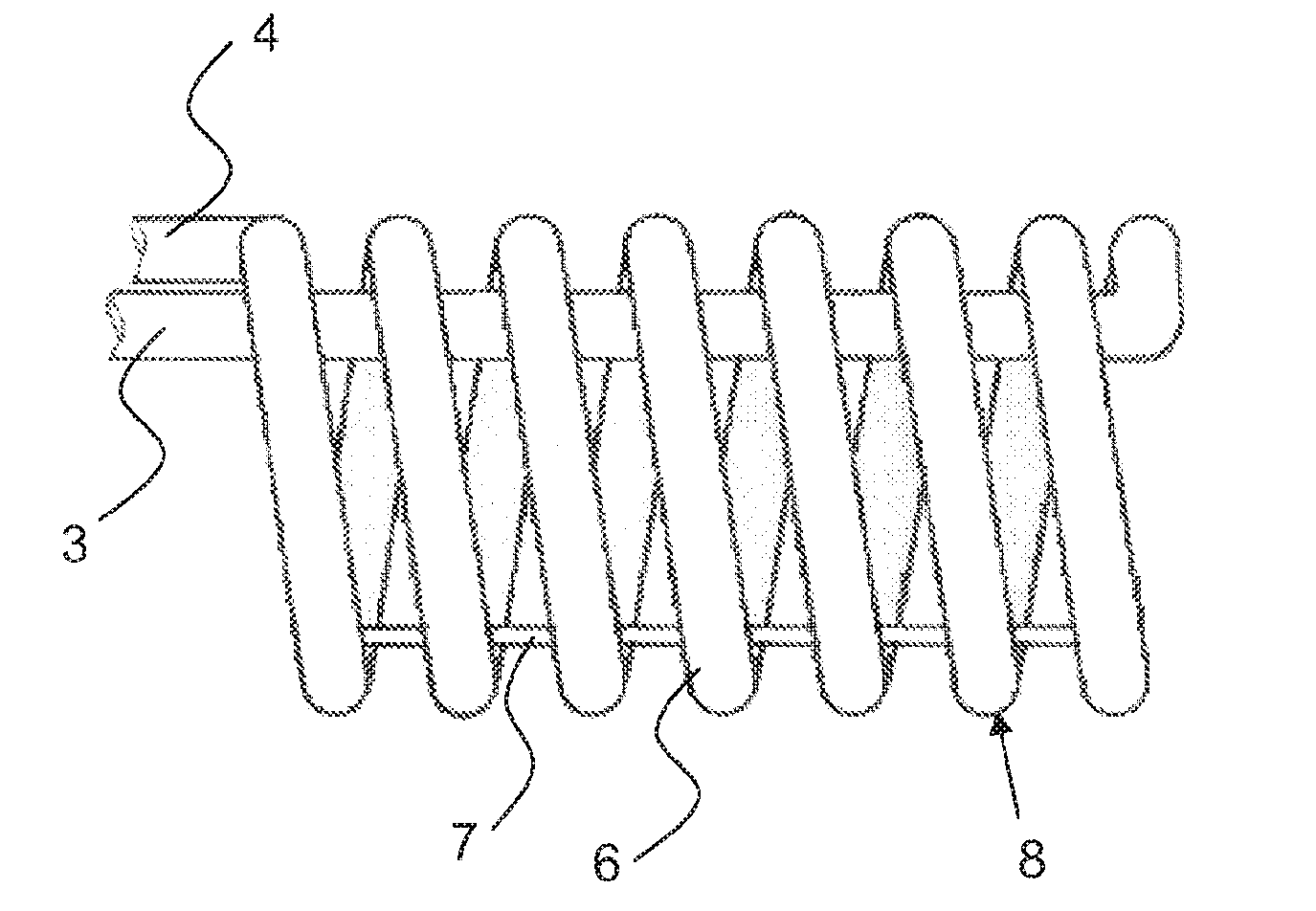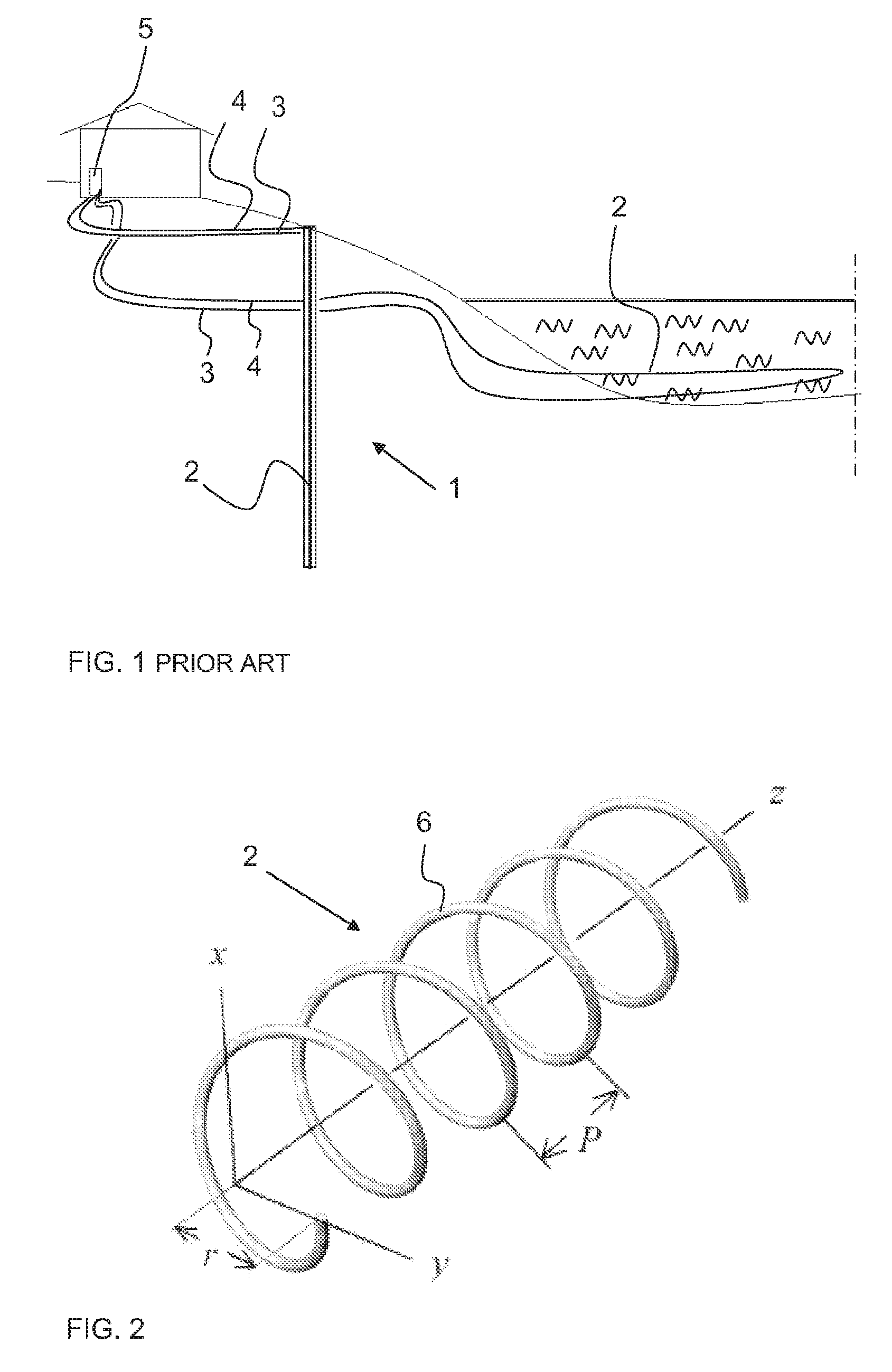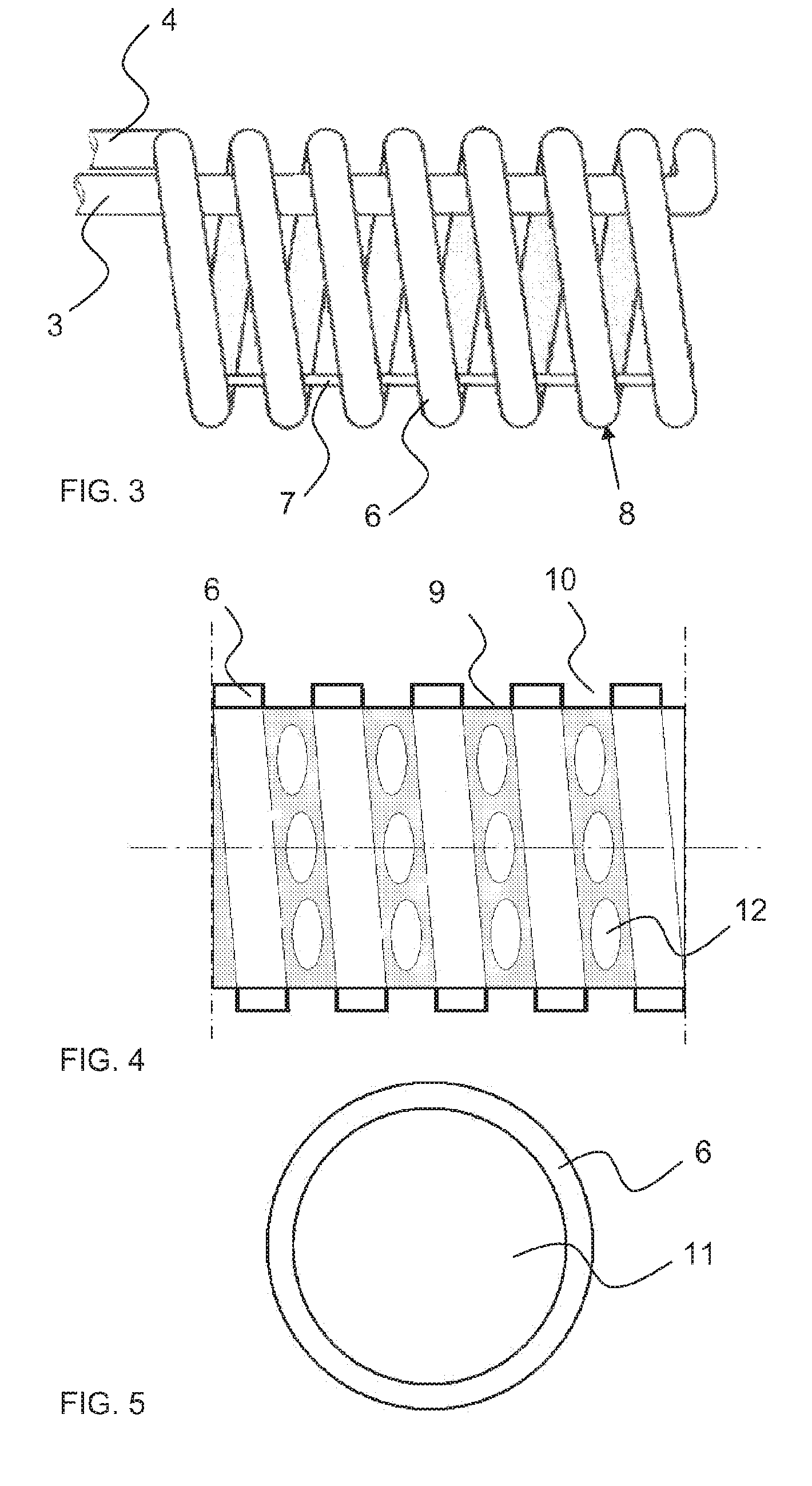Ground circuit in a low-energy system
a low-energy system and ground circuit technology, applied in geothermal energy generation, indirect heat exchangers, lighting and heating apparatus, etc., can solve the problems of large plots of land, serious damage to the root system of plants and trees, and placement of such areas in a finished courtyard area, so as to achieve effective utilization of energy content and significantly facilitate installation and maintenance work
- Summary
- Abstract
- Description
- Claims
- Application Information
AI Technical Summary
Benefits of technology
Problems solved by technology
Method used
Image
Examples
Embodiment Construction
[0037]In the present figures, embodiments of ground circuits in a low-energy system have not been shown on scale, but the figures are schematic illustrating the structure and operation of the preferred embodiments in principle. Thus, the structural parts indicated by reference numerals in the attached figures, correspond to the structural parts denoted by reference numerals in this specification.
[0038]It is known per se to collect energy, for instance, for use in a heat pump by utilizing the solutions in accordance with FIG. 1. The figure shows two parallel systems, the first of which comprises a collection pipe system 2 arranged in a heat well 1, which communicates with a heat pump 5 through connection and return pipelines 3 and 4. In the second system of the figure the heat pump communicates with a collection pipe system submerged in a nearby water body through second connection and return pipelines.
[0039]Even a schematic figure of this kind shows the large dimensions of the colle...
PUM
 Login to View More
Login to View More Abstract
Description
Claims
Application Information
 Login to View More
Login to View More - R&D
- Intellectual Property
- Life Sciences
- Materials
- Tech Scout
- Unparalleled Data Quality
- Higher Quality Content
- 60% Fewer Hallucinations
Browse by: Latest US Patents, China's latest patents, Technical Efficacy Thesaurus, Application Domain, Technology Topic, Popular Technical Reports.
© 2025 PatSnap. All rights reserved.Legal|Privacy policy|Modern Slavery Act Transparency Statement|Sitemap|About US| Contact US: help@patsnap.com



